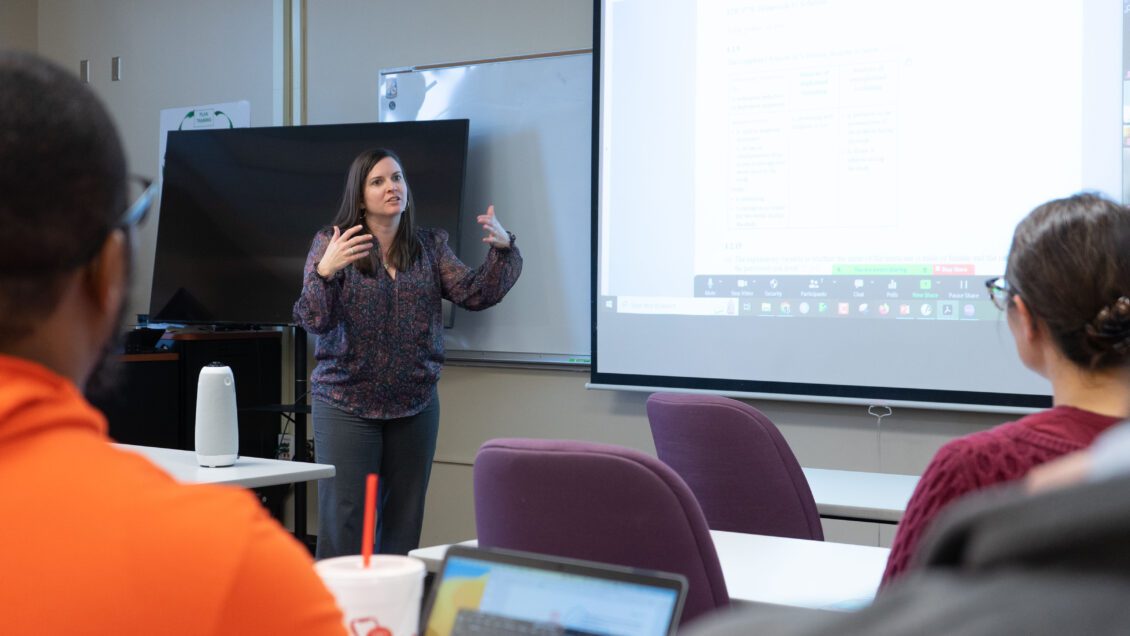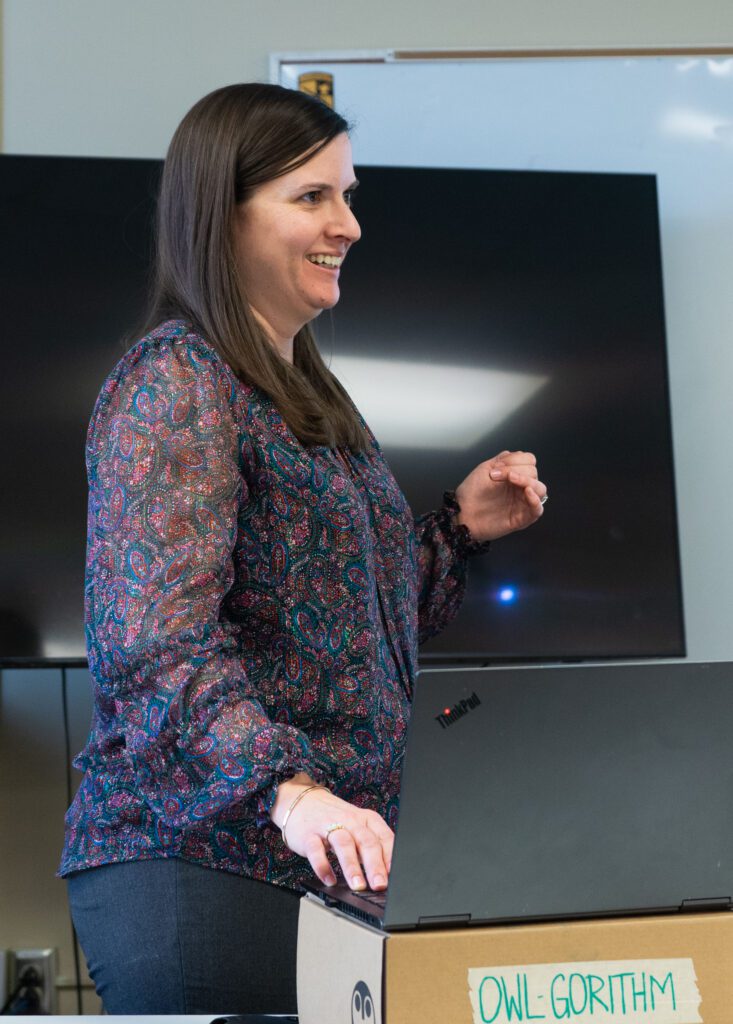
Christy Brown is one of the few people who can credit the discovery of their career path to an intervention. Her college friends were so impressed with her understanding of complex math concepts and her ability to teach them as a tutor, they staged a literal intervention to get her to change her major to math education at the University of Georgia.
Luckily, her career since then has proven those friends correct in their appraisal of Brown and her abilities. She serves as clinical associate professor of quantitative methodology in the College of Education, where she primarily teaches graduate students in the College’s HyFlex Ph.D. programs. We caught up with Brown to discuss that life changing intervention, how she has “flipped” her classroom and what she loves about the College of Education.
Why do you love teaching?
I love when I am able to make what is typically considered a difficult subject accessible to students, especially when it proves useful in pursuing their own research interests. I love my current position as it combines the two professional interests I am most passionate about: the teaching of statistics and the application of statistics in pursuit of improving the student experience.

When did you know that the field of education was for you?
From an early age, I knew that math was my strongest academic subject. My parents both worked in the business world and encouraged me to consider a career in accounting, which was my first major as an undergrad at the University of Georgia. At the time, Calculus I was a required course for business majors, which I had exempted with AP Calculus credit, but many of my classmates struggled to pass this course and recruited me to tutor them. After a few semesters of this side hustle, my friends staged an intervention to convince me to change my major to math education. I had never before considered teaching as a possible career path, but I am so grateful to this group of friends for helping me find my true calling!
What is your teaching philosophy?
I believe that students need to be active participants in the learning process in order to build a deep understanding of new concepts. For example, in order to introduce the concept of a p-value in my introductory statistics courses, I have students repeatedly sample from a population in which the null hypothesis is true, then count samples to determine how often results as extreme or more extreme as what was observed in the actual study occurred. Statistics education research has provided evidence that such an approach to introducing inference is more intuitive for students than traditional methods based on theory-based approaches, and thus helps students to initially process the backwards logic of statistical inference.
My teaching is also guided by the six recommendations from the American Statistical Association’s “Guidelines for Assessment and Instruction in Statistics Education”: teach statistical thinking, focus on conceptual understanding rather than mere knowledge of procedures, integrate real data with a context and purpose, foster active learning, use technology to explore concepts and analyze data, and use assessments to improve and evaluate student learning.
I also work to promote inclusive practices in quantitative research by introducing students in my intermediate course to the tenets of Quantitative Critical Theory–QuantCrit–and providing tips for inclusive demographic data collection.

Describe an effective approach you use in the classroom.
As one of their first assignments, I have my students complete a survey on general interest topics. At several points throughout the semester, I ask the students to develop a research question based on the class data that can be analyzed using a method we’ve learned in the course. It’s always fun to see what questions the students come up with and the trends they uncover. I believe it helps make the methods we learn more relatable to their interests and also gives them practice with the essential skill of developing a statistical research question.
Another approach I now use is a fully “flipped classroom” model, which aligns with my active learning philosophy. A flipped classroom is an approach in which direct instruction moves from the group learning space to the individual learning space, and the resulting group space is transformed into a dynamic, interactive learning environment where the educator guides students as they apply concepts and engage creatively in the subject matter.
I post prerecorded videos where I work through examples that students can view on their own time. In these examples, I try to limit technical jargon and focus on conceptual understanding. I incorporate data from my consulting work as much as possible to help students see how quantitative methods can be applied to investigate topics that are of interest to them and to connect students to faculty in our College with shared research interests. At the end of each video example, students are presented with exercises they are asked to work through for themselves before being presented with the solutions as a check on their understanding.
Class meeting times then consist of student explorations involving a variety of active learning experiences such as using web applets for shuffling decks of cards or flipping coins to estimate p-values, collecting data from the class, running simple experiments and interpreting results from statistical software. This approach works particularly well in the HyFlex model adopted by many of our College’s Ph.D. programs, where students can opt to attend class virtually or in person. Typically, we begin class as a whole group to review important concepts from the videos that are needed to complete the exploration and collect any data before splitting off into groups either in person or in virtual breakout rooms to complete the explorations. We end class as a whole group to review important takeaways.
What do you like about the College of Education and/or Clemson University?
I love the inclusive mindset in the College of Education!
Is there any subject that you’re interested in or devote time to that might surprise people?
My second best subject in school was English and I actually took some advanced English courses in college just for fun – not typical for a quantitative person!
What do you enjoy doing when you are not teaching? I enjoy spending time with my husband Andrew, who is an associate professor of statistics here at Clemson, and my adorable 2-year-old son, Luke. I also love cooking, reading, spending time with friends and working out at the Clemson Jazzercise Center!
Get in touch and we will connect you with the author or another expert.
Or email us at news@clemson.edu
